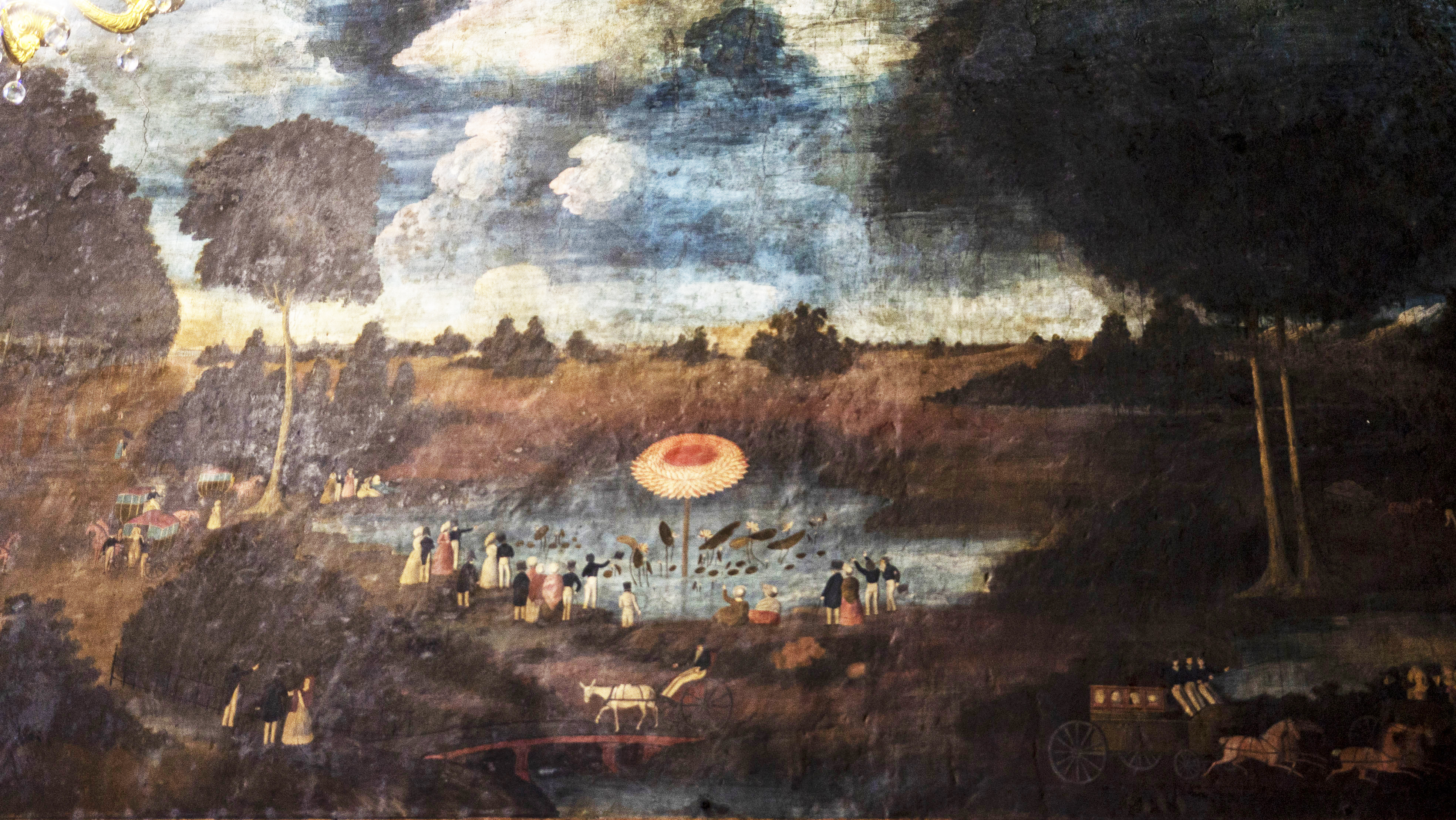The Murals of Khrua In Khong Enlightenment is Happening Everywhere
Main Article Content
Abstract
Khrua In Khong is famous in Thailand as the first Thai artist to apply Western techniques, such as perspective and chiaroscuro, to Thai mural painting. His best regarded set of murals—those at Wat Bovorn Niwat and Wat Bovorn Niwet—feature not the traditional narratives typically found in murals of the time, such as the past lives of the Buddha. Instead, they show mysteriously shaded vistas of underground railways, clock towers and even the United States Congress building. They were indeed original in terms of artistic technique, but also extremely innovative in what they had to say. The murals use allegories to turn scenes of Western civilization into a coded message, likely designed by the presiding abbot Vajirayan, who was later to be King Rama IV. Placing these murals in the context of contemporary events and debates on the Buddha’s teachings in Thailand, this article argues that they constitute a visual argument about Thai Buddhism’s place in a new Western-dominated, scientific world.
Article Details
References
Bovorn Niwat was originally named Wat Bovornmasuk meaning 'Temple of Excellent Happiness' and was colloquially known as Wat Nok or the 'Outer Temple' and was understood to be an aranwasi or 'forest dwelling' temple as opposed to Bovorn Niwet which was known as khamwasi or 'community dwelling' temple. The translation here of the two very similar names is meant to convey their original status as forest and city temples respectively.
Listopad, "The Process of Change in Thai Mural Painting," p.11.
Wiyada Thongmitr, Khrua In Khong's Westernized School of Painting, p.125.
John Clark, "The Worlding of Asian Modern," p.73.
Ibid., p.88.
Sutha Sinawat, Research on the symbology of thammayut dharma-puzzle murals and Suda Ngamluea, "Research on the culture of the murals in the interior of the ubosot of Wat Bovorn Niwet, Bangkok."
Listopad, "The Process of Change in Thai Mural Painting," p.4.
American ambassador Edmund Roberts wrote that he visited the house of the Minister of Trade (Chao Phraya Phraklang), then Dit Bunnag (1788-1855), and found the walls covered with 'common English prints of battles' and 'rural scenery.' Wilairat Yongrot and Thawatchai Ongwuthivage, Deciphering the murals of Khrua In Khong and King Mongkut, pp.49-51.
John Clark notes many earlier mural paintings such as those at Wat Suwannaram (painted in about 1830) contain elements of Chinese landscape painting. He suggests that we might see Khrua In Khong's use of practical disappearing point perspective not as a 'radical innovation' but as a 'more effective deployment' of these existing Siamese mural techniques. See Clark, "Khrua In Khong," p.4.
Reynolds, "The Buddhist monkhood in nineteenth-century Thailand," p.82.
John Listopad, e-mail message to author, February 1st, 2022.
It should be noted that, while I translate pritsana tham literally as 'dharma-puzzle' throughout this article, its meaning is closer to 'dharma-allegory' or 'dharma-metaphor' in actual spoken usage.
Surachai Chongchitngam, "Khrua In Khong's Journey Across the ocean," p.45. In the sutra, those who hear the Buddha's teachings but do not follow them are compared 'a man who is sick with fever when a doctor is there but who will not allow himself to be cured.'
Peter Jackson, Society and Buddhism, pp.42-7.
Surachai Chongchitngam, "Khrua In Khong's Journey Across the ocean," p.55.
Wilairat Yongrot, "A study of cosmo-geography,' pp.75-81.
Such ideas are also present in Buddhist literature compiled at around the time that Khrua In Khong's murals were painted. For example, the Life of the Buddha (Pathomsomphodhi) compiled by the Supreme Patriarch Paramanuchit during the reign of Rama IIIrd speaks of the Buddha 'in the midst of the universe, lustrous, radiant, luminous...'
Nidhi Eoseewong, Pen and Sail, p.269.
Wilairat Yongrot, "A study of cosmo-geography,' p.24.
As Nidhi Eoseewong and others have pointed out that there was in the early Bangkok period a marked turn away from the miraculous, highly-conventionalised narratives organized around merit of the Ayutthaya-period. These changed towards something more historicized and individual which celebrated wisdom as knowledge rather than merit. However, such a change was cumulative and preceded in many cases obvious European influence. For example, Paramanuchit's text The Life of the Buddha omits the past lives of the Buddha and focuses on the (relatively) more historicized figure of Siddhartha. See Nidhi, Pen and Sail, p.284.
Sutha Sinawat, Research on the symbology of thammayut dharma-puzzle murals, p.42
Cited from Wilairat Yongrot and Thawatchai Ongwuthivage, Deciphering the murals, p.48.
Thongchai Winichiakul, Siam Mapped, p.38.
Wilairat Yongrot and Thawatchai Ongwuthivage, Deciphering the murals, pp.42-8.
Cited and translated from the Thai translation in Wilairat Yongrot and Thawatchai Ongwuthivage, pp.100-1.
Thongchai Winichakul, Siam Mapped, p.42.
Stephen Markel, "The Origin and Early Development of the Nine Planetary Deities," p.194.
Thongchai Winichakul, Siam Mapped, p.57.
These are from Wat Bovorn Niwet inscriptions.
Steven Collins, Nirvana: concept, imagery, narrative, pp.87-8.
Listopad, "The Process of Change in Thai Mural Painting," p.10.
Wiyada Thongmitr, Khrua In Khong's Westernized School of Painting, p.130.
Surachai Chongchitngam, "Khrua In Khong's Journey Across the ocean," p.63
Wiyada, Khrua In Khong's Westernized School of Thai Painting, p.131.
Craig James Reynolds, "The Buddhist monkhood in nineteenth-century Thailand," p.86.
Collins, Nirvana, p.89.
Cited from Wilairat Yongrot and Thawatchai Ongwuthivage, Deciphering the murals, p.141.
Depicted in the murals are what appear to be Doric columns, whereas the actual United States Capitol has the more elaborate Corinthian columns. Nevertheless, the artist and audience would likely have understood these as simply Grecian columns.
William Ward, "The lotus symbol: its meaning in Buddhist art and philosophy," p.138.
Tatiana Holway, The Flower of Empire, pp.168-70.
Wilairat Yongrot and Thawatchai Ongwuthivage, Deciphering the murals, p.176.
Maurizio Peleggi, Lords of Things, pp.12-16.


